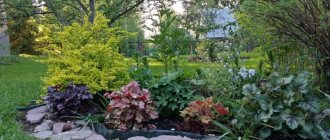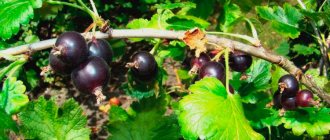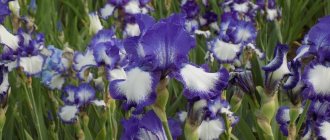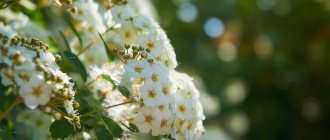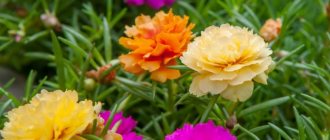A herbaceous plant such as delphinium is directly related to the buttercup family. It is also called spur or larkspur. This genus is represented by annuals and perennials and includes approximately 450 different species. Annual plants, of which there are about 40 species, are sometimes classified into an adjacent genus and are called sokirs (Consolida). In China, approximately 150 species of delphiniums can be found in nature. They are also found throughout Southeast Asia, in the Southern and Northern Hemispheres, and in the mountains of tropical Africa. A large number of people tend to believe that while the flowers are in an unopened state, the inflorescence itself resembles the head of a dolphin, which is why the flower was named that way. But there is also an opinion that delphinium was named after the ancient Greek city of Delphi, because a lot of them grew there. This plant has gained immense popularity among gardeners.
Recommendations for planting larkspur
The culture does well in soils with good drainage. They should be slightly acidic or neutral. Delphinium also likes loose loams flavored with peat, compost or humus.
The planting holes should be about half a meter deep. The gardener should determine the distance between them independently; it all depends on how large the adult plant is. The soil removed from the hole must be mixed with peat or compost in a 1 to 1 ratio, then fill the hole to the middle. After a couple of days it will settle somewhat, then you can start planting.
It is important to remember that this plant prefers well-lit places. Light shadow is allowed.
Types and varieties
The genus Delphinium includes more than a thousand species, of which 450 are common, found throughout the world and have significant external differences. Several species are grown in our area, and 2 more grow wild. Individual varieties and varieties differ in flower structure, height, flowering date, and resistance. Delphinium New Zealand deserves special mention - a huge plant with large inflorescences.
Garden hybrids
The most famous is the garden hybrid delphinium (Delphinium cultorum, D. hybridum). This is the broadest group of countless varieties selected by botanists. The typical species reaches a height of 2 meters, creates rosettes, blooms from June to September. Simple (rarely double) flowers are collected in long inflorescence-clusters.
Garden delphinium hybrids are divided into the following most popular groups:
- Elatum – hybrids, in the selection of which the tall larkspur (Delphinium elatum) participated. Varieties of the elatum group reach a height of 2 meters, have low requirements, and are easy to grow.
- Belladona - low spurs, 1 meter high. The inflorescences are freer and consist of small flowers. They bloom early - in June.
- Pacific or Pacific - spectacular spurs, reaching a height of 2 m. Double flowers are collected on fluffy inflorescences. Most often these are annual plants. They can overwinter, but the flowering next year is much weaker.
- Marfinskie - breeding was carried out by the Russian breeder N.I. Malyutin.
- Highlander is a Scottish group distinguished by the number, size of flowers, and abundance of flowering. Flowers with a diameter of 5-6 cm consist of 45-58 petals and are long-lasting. The inflorescence contains 40-50 flowers. Compared to other groups, plants are more resistant to adverse weather conditions, pathogens and pests.
Interesting varieties of garden delphinium
- “Magic Fountains” Magic Fountains - a variety with white and lavender flowers, 150-180 cm high;
- "Galahad" Galahad - a variety with white flowers, 140-180 cm high;
- “Blue Bird” Blue Bird is a variety with blue flowers with a white eye;
- "King Arthur" King Arthur - a variety with dark purple flowers with a white eye, height 1.2-1.8 m;
- “Excalibur light pink” Excalibur Lilac Rose – the variety has semi-double flowers, height 1-1.2 m;
- “Excalibur light blue” Excalibur Light Blue - a variety with blue flowers with a white center, height about 100 cm;
- “Sweet Sensation” Sweet Sensation – two-tone, purple-blue, double flowers.
High
Delphinium elatum – Tall larkspur is a perennial found in the wild. Many hybrid varieties are derived from this species. Larkspur reaches a height of an average of 1.5 meters (rarely 2 meters). The plant forms 5-7 deeply dissected leaves.
The flowers are azure or violet in color and are collected in long panicle or raceme-type inflorescences. They consist of 5 round sepals and a spur. Flowers are pollinated by bumblebees. Tall delphinium blooms from July to August.
Tatransky
Delphinium oxysepalum – Tatra larkspur – a relic of nature from the Tertiary period. The height reaches 50-100 cm. It produces 5-lobed dissected leaves, consisting of 3 leaves. Flowers on long stems are collected in a cluster and contain a long silver spur. The color of the flowers is purple or azure. Flowering time is July. The species creates hybrids with tall delphinium.
Large-flowered
Delphinium grandiflorum – Grandiflora larkspur – a species found naturally in Russia and China. It is called the Chinese or Siberian spur. The height reaches a maximum of 100 cm (average 40-50 cm). Forms dissected leaves. The flowers are magnificent, white, blue, purple. Unlike D. elatum, Chinese grandiflora delphinium has a loose bush form. Flowers are scattered along the shoots of the inflorescence. Blooms from June to July, often resuming flowering in September.
Bruno (Brunona)
Brunon's larkspur (Delphinium brunonianum, D. jacquemontianum) is a perennial, partly evergreen, dwarf - reaches a height of 15-40 cm. The leaves are flexible. The stem has 5-10 blue-violet, cup-shaped flowers with an eye that look as if they are swollen. The spurs are short. The perennial blooms from June to July, with many varieties blooming again in September. The species is found in Afghanistan, Pakistan, and Tibet. The plant exudes a musky aroma, which is why it is colloquially called musky.
Holostalked
Delphinium nudicaule – Holostalked delphinium is a low species, reaching a height of only 30-60 cm. It develops rosettes of round, 3-5-petalled leaves. The inflorescences are loose, at the top there are 5-20 pointed, tubular flowers (not much like other species) of an orange-red hue. Holostalked larkspur blooms from July to September. It is found in the wild in America, growing in meadows and rocky slopes.
What to do with delphinium after flowering
When the leaves dry after flowering, the stems must be cut off at a height of up to 45 centimeters from the ground. For reliability, the top is lubricated with clay. This is done to prevent rain from damaging the root collar. It is worth noting that almost all types of larkspur are resistant to cold, even seedlings.
If the winter is snowless and frosty, the beds should be covered with straw or spruce branches. To protect against temperature changes, it is necessary to pour half a bucket of sand into the bottom of the hole during planting. This will allow excess moisture to drain away.
Description of the plant
Impressive, tall delphinium (larkspur) inflorescences are an excellent decoration for summer flower beds. The Latin name comes from the word delfinion and refers to the structure of the flower, the buds resemble the nose of a dolphin.
Delphinium perennial flowers belong to the Ranunculaceae family. It can be found in China, Siberia, Mongolia, and Europe. In nature, plants are found on the outskirts of forests, clearings, banks of streams, and mountain meadows. Numerous hybrids are grown in our gardens - annual, perennial, 80-200 cm high.
The plant has rigid, erect, non-branching stems – pubescent and non-hairy. The leaves are palmate-pinnate, large, toothed, on long petioles, located opposite each other, forming a rosette. Plants form thick, fibrous roots.
The main decoration of perennials is flowers, usually blue or purple, white, pink, two-tone, pastel or bright. The inflorescences are located at the top of the stem, collected in long clusters - up to 100 centimeters long!
The individual flowers are borne on long stems, usually 4-6 cm in diameter. The upper leaf of the sepal creates a long transverse process, similar to a spur (hence another name for the plant - spur). Delphinium flowers are simple or double, appear from mid-June to July, honey-bearing.
Attention! Many delphiniums are poisonous. If consumed, they can cause food poisoning, vomiting, blurred vision, and difficulty breathing.
Versatile application in landscape design
Delphinium is universal in use - suitable for gardens of various types:
- rural,
- eastern,
- naturalistic,
- forest.
Garden larkspur hybrids are an excellent proposition for rural, English and eclectic gardens.
Tall varieties of larkspur are planted near fences, walls, and small architectural objects. From a few to a dozen are planted on ridges, planting them in the background as a backdrop for low-growing species.
Low varieties are suitable for random planting in various parts of a flower bed or edging. You can grow them in containers as decoration for balconies, terraces, and porches.
Delphiniums of different types go well with each other and with many perennials:
- peonies,
- geranium,
- lupins,
- decorative garlic,
- yarrow,
- echinacea,
- helenium,
- sunflowers,
- daylilies,
- chrysanthemums.
Varieties with cornflower blue flowers look beautiful in the company of red poppies, yellow daylilies, pink foxgloves, and white daisies. Varieties with white flowers should be planted next to yellow rudbeckia, pink echinacea, scarlet lobelia and delicate ornamental grasses. Delphinium can be used to create a one-color flower, for example, with only white or blue flowers. Classic combinations with roses look attractive.
Spurs look great alone, in large groups, against the background of a lawn, house walls, or fences. You can create stripes along sidewalks and paths.
Large, rigid flowers are suitable for cutting and remain fresh in a vase for a long time. Delphinium cultorum is used for vases. Flowers should be cut when the inflorescences are half developed. Then they stand in the vase for 3-6 days.
Although delphinium flowers are gorgeous and very showy, they will not stay in the flowerbed for very long, so they should be planted among plants that will cover the empty spaces left by the magnificent spur flowers with flowers or leaves.
The most important secret when growing delphiniums from seeds from Terry Dowdeswell
My website has detailed instructions in Russian (Terry Dowdeswell, contacts: delphinium.co.nz). Briefly speaking about the most important thing, the place where the seedlings are kept should be cool and well ventilated; instruments - sterile; the substrate is well moistened, but not over-moistened (flooding is detrimental to crops). Using good quality seeds from trusted suppliers is the key to success. In the garden in warm countries, the main problem is snails and slugs. And in countries with cold winters... I have not had any complaints yet; delphiniums grow beautifully in Russian gardens. I will only note that in very hot months, delphiniums cannot tolerate the bay.
Repetition of varietal characteristics if you collect the seeds yourself and sow them is unlikely. Of course, if you exclude uncontrolled pollination. The goals of gardeners and breeders do not coincide here. Gardeners love varieties that can be accurately reproduced by collecting seeds from delphiniums already growing in the garden. And breeders and sellers want guaranteed varietal seeds to be purchased only from them. So much effort, time and money goes into creating varieties that you don’t want to share the result with anyone. So alas! In subsequent generations, the characteristics fixed in our varieties will be lost. But this does not mean that they should not be sown. You can get some very interesting hybrids, so go for it!
Compact New Zealand delphinium hybrids New Millennium™Dwarf Stars (photo: Terry Dowdeswell)
Growing and care
Delphinium is a stunning, albeit short-lived, perennial plant that, in addition to its stunning flowers, boasts impressive, tactile leaves. In order for the plant to grow well, you need to provide suitable growing conditions and care for the perennial delphinium.
Tall varieties of larkspur require the use of supports.
After flowering, it is recommended to remove shoots with inflorescences, then there is a high probability that they will bloom again in late summer - early autumn.
Landing site requirements
Delphinium should be grown in sunny places, protected from the wind (especially tall varieties). This is important, long stems are quite fragile and can break from strong gusts of wind. Larkspur can grow in partial shade but will produce less impressive blooms. Positions that receive the sun's rays in the morning and light shade during the day are better suited.
Delphiniums prefer soils with the following characteristics:
- fertile,
- humus,
- moderately humid,
- permeable.
Larkspur can be grown in clay soils. Sandy soil is unsuitable, you need to work on it in advance to increase fertility and absorption (water absorption). Alkaline or neutral soil reaction is optimal for most types of larkspur.
Landing
Before planting delphinium, you need to carefully prepare the area - clear it of weeds and dig it up. In autumn, when digging, it is recommended to mix garden soil with rotted manure and compost.
Perennial delphinium is grown from seeds. You can sow seeds first in seedling boxes, but usually they are sown directly into the ground.
When to plant delphinium? The optimal planting date is autumn or spring.
The average interval is 30-40 × 30-40 cm (depending on the type and individual characteristics of the variety). Larkspur needs a lot of space. Plants planted too densely choke each other out, which increases the susceptibility of flowers to certain parasites and diseases (powdery mildew, snails).
Wintering
The frost resistance of delphinium is quite high. Sensitive varieties and young seedlings are recommended to be covered with pine needles, non-woven material or sprinkled with leaves in winter.
Problems can be created not so much by frost as by variable weather and snowless winters. Larkspur grown in containers must be carefully covered or moved to a cool place for the winter.
Watering, fertilizer
Delphinium should be watered if there is no rain for a long time. Young seedlings require regular watering. You need to water carefully, without splashing the leaves and flowers. Larkspur responds positively to soil mulching.
When applying organic fertilizer, the use of mineral fertilizers is not necessary. If organic fertilizers are not applied, mineral fertilizers with a high content of potassium and phosphorus are applied.
After the first flowering in early summer (June), the plants need to be fed with compost and the inflorescences should be cut off at a height of about 10 cm above the ground. Thanks to this, in the second half of summer, larkspur will decorate the garden with wonderful flowers.
Reproduction
The method of reproduction depends on the group:
- Propagation by dividing the bush is often practiced. To propagate delphinium using this method, an adult plant is dug up, being careful not to damage the roots too much, divided and planted in a new place.
- In the case of generative propagation (by sowing collected seeds), it is necessary to remember that seedlings sown with independently collected seeds do not completely duplicate the characteristics of the mother plant.
When to replant perennial delphinium? To ensure that larkspur grows well and blooms annually, it is worth changing the crops every few years.
Diseases and pests
Prevention and protection of delphinium from diseases and pests is largely based on proper care:
- plants can be periodically sprayed with infusions from plants;
- Hygiene is important - removing plant debris after the season;
- you need to monitor the density of plantings - high density will not improve the appearance of flower beds and other plantings, it will increase the risk of infection, and cause problems with pests;
- Sometimes it is necessary to sprinkle flower beds with broken egg shells or basalt flour to protect against slugs and snails that adore larkspur.
Delphinium may be threatened by:
- blue-green larkspur aphid feeding on delphinium (Delphiniobium junankianum);
- chrysanthemum nematode.
The following diseases can affect larkspur
| physiological | yellowing or browning of leaves when grown on too light, quickly drying soil) |
| fungal |
|
| bacterial | black leaf spot |

